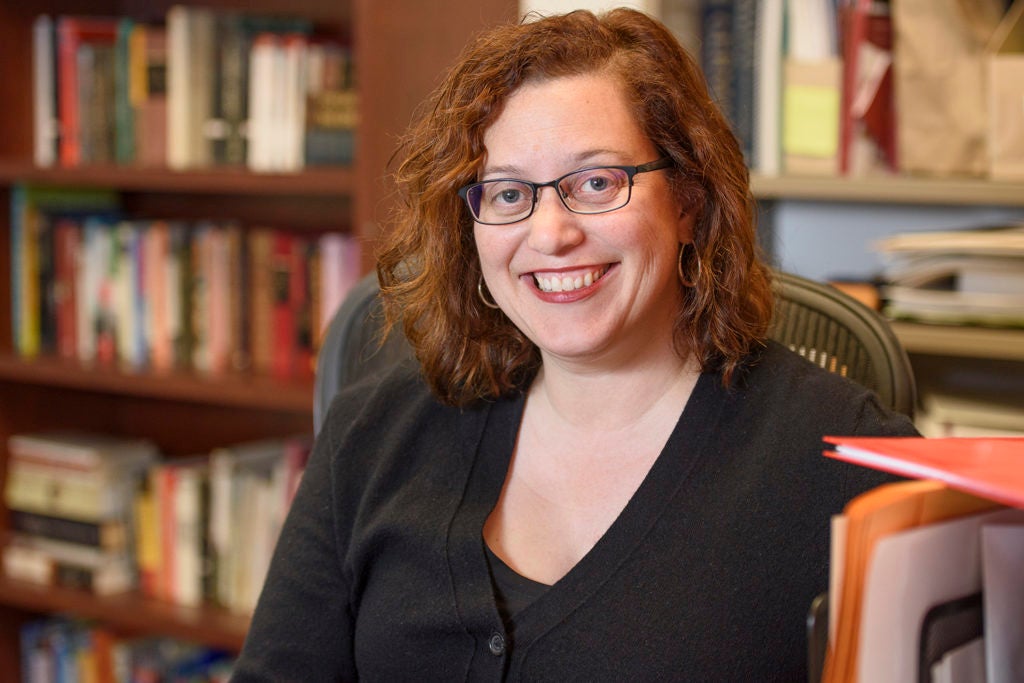Five things to know about pre-major advising
Alice Petty, director of pre-major advising in the Office of Undergraduate Advising and Research, oversees the many pre-major advisors university-wide who help new students make thoughtful choices about their academic careers. Petty, who earned her PhD in Near Eastern studies from Johns Hopkins University, answers five questions about the program for parents.
What academic advising do freshmen receive at Stanford?
New students are assigned a pre-major advisor (PMA) and an academic advising director (AAD). The AAD is a full-time, PhD-level advisor with an office in the student’s residence complex. That’s someone who works within Undergraduate Advising and Research (UAR), is easily available, is current on academic offerings across the university and can help students synthesize academic requirements, opportunities, policies and deadlines.
The PMA is a volunteer faculty or academic staff member assigned to a particular residence and matched to no more than six students. PMAs help students imagine opportunities, reflect on their experience and develop strategies for making thoughtful choices. PMAs connect students with the community by helping them build the relationships that are a vital part of a Stanford education. Because pre-major advisors have only a few advisees, they can get to know their students pretty well.
Student-athletes are also given an academic advisor with professional expertise and personal experience navigating the challenges they face. In addition to evaluating NCAA academic eligibility requirements, each of these advisors works with specific teams and helps with everything from course selection and sequencing, major exploration and research opportunities to post-graduate plans and connecting with campus resources.
Why are incoming students assigned so many advisors?
We want to encourage students to cultivate a network of advising support. The pre-major advisor, academic advising director and academic advisor for student-athletes will have different training and expertise, but all are equally invested in asking the right questions, guiding students to opportunities and helping students make decisions. Plus, when students choose a major, they will get an advisor from that department.
Who are Stanford’s pre-major advisors and what advice and guidance do they offer?
Nearly half of pre-major advisors are faculty members, representing all seven schools. They can also be researchers from one of the many research centers on campus, such as the SLAC National Accelerator Laboratory or the Hoover Institution. The staff members who serve as pre-major advisors have graduate-level degrees and serve in various campus capacities. All have knowledge of opportunities and resources that can help undergraduates get the most out of their experience.
Students are required to meet quarterly with the pre-major advisor. Why is that?
The quarterly meeting compels students to pause and reflect in a one-on-one conversation with a thoughtful, engaged and informed advising partner. These conversations focus on themes that correspond to the Stanford student experience: getting to know one another and establishing expectations; the transition to college; weighing opportunities; and reflection and planning.
Do you have any advice for parents who might be hearing from their Stanford students that they are confused about the university’s many academic offerings?
If they are confused, encourage them to make an appointment to see either their PMA or AAD. That’s what they are there for. Also, encourage your student to plan for the meeting by thinking about questions, concerns or challenges he or she might want to discuss. We hope you will ask your student about experiences with different advisors: Have you met with your AAD? Who is your PMA, and what does he or she do at Stanford? Have you gone to your instructor’s office hours? Who are you inviting to Faculty Night in your residential dining hall?
It takes time for students to narrow down the abundance of Stanford’s academic offerings. In addition to encouraging students to talk with their advisors, you can help just by listening as they think through their options. It can be overwhelming at first.
You can also help by sharing your own experiences: Who have your advisors and mentors been, and in what ways have they impacted your life? You may take your answers to these questions for granted, but your student will benefit from learning how you use advising in your life.
Learn more at the Pre-Major Advising website.

